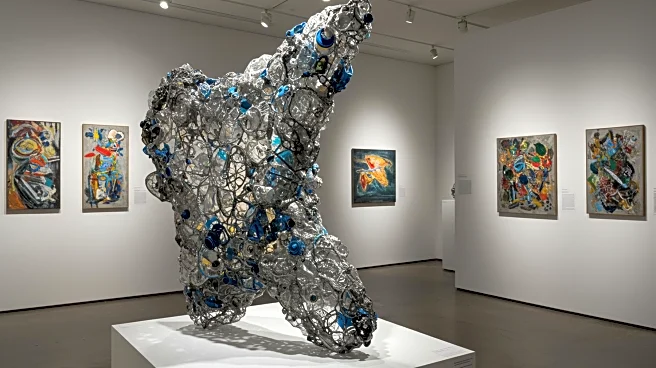What's Happening?
An artist named Benjamin Von Wong has created a striking visual installation outside the United Nations office in Geneva to coincide with ongoing negotiations for a global treaty to end plastic pollution. The installation, titled 'Thinker’s Burden,' features a large sculpture being gradually covered in plastic waste, symbolizing the growing environmental crisis. The sculpture, inspired by Auguste Rodin's 'The Thinker,' depicts a male figure in deep thought, sitting atop Mother Earth, cradling a baby, and clutching plastic bottles. This artistic endeavor aims to remind delegates of their responsibility to address plastic pollution as they work towards crafting the first global, legally binding treaty on the issue. The negotiations involve representatives from 184 countries and over 600 organizations, with the goal of reaching an agreement by the end of the week.
Why It's Important?
The installation serves as a powerful reminder of the urgent need to address plastic pollution, which poses significant environmental and health risks globally. By visually representing the burden of plastic waste, the artwork aims to influence policy makers and accelerate the pace of treaty negotiations. The success of these talks could lead to a landmark international agreement that would establish regulations and commitments to reduce plastic waste, benefiting ecosystems, wildlife, and human health. The involvement of numerous countries and organizations highlights the widespread recognition of plastic pollution as a critical issue that requires coordinated global action.
What's Next?
As the negotiations continue, delegates face the challenge of resolving numerous disagreements to finalize the treaty. The sculpture's evolving state, with more plastic waste added daily, underscores the urgency of reaching a consensus. The outcome of these talks could set a precedent for international environmental governance and pave the way for future treaties addressing other global environmental issues. Stakeholders, including environmental groups and governments, are likely to closely monitor the progress and outcomes of these discussions.
Beyond the Headlines
The use of art to influence policy highlights the role of creative expression in environmental advocacy. By engaging emotions and prompting reflection, art can shift public perception and drive change in ways that facts alone may not achieve. This approach underscores the importance of interdisciplinary collaboration in addressing complex global challenges.












